Corresponding Author: T Sambasiva Rao*, Dr. A. Samba Naik1 Dr. N. Gopalarao2
*K. B. N College, Kothpet, Vijayawada,Andhra Pradesh, India, Email [email protected]
- K. B. N College, Kothpet, Vijayawada,Andhra Pradesh, India
Email [email protected]
- Acharya Nagarjuna University,Nagarjuna Nagar, 522510,Guntur, Andhra Pradesh, India
Email id. [email protected]
Abstract
Probiotics represent a group of useful bacteria that provides a wide range of benefits. These valuable bacteria produce defense against various infections including bacteria and viruses and establish healthy homeostasis with host. Recent findings have also demonstrated that probiotics help in regulation of several biochemical parameters including carbohydrate utilization, lipid profile and protein metabolism. The selected probiotics also aid in absorption of several vitamins and vital mineral elements. Shrimps farming were growing aquaculture worldwide and emerged as an alternative source of food for humanity. The commercial shrimp farming acquires several technological inputs to ensure quality and yield. On the contrary, there are several limitations associated with shrimps farming where infection and associated diseases to growing shrimps is major one. Traditionally, chemical-based antimicrobial and antibiotic agents remain a cheap alternate to tackle such challenges. The use of chemical-based antimicrobials and antibiotic agents indeed harmful to the environment but also affect quality of growing shrimps. Probiotics gained tremendous success in aquaculture not only to protect against various infections but also in improving growth of shrimps. Here, in the present study we aimed to study effect of probiotics on biochemical profile of growing shrimps. Further, use of probiotics on the immune system of growing shrimps was also investigated. Here, in the present study Giant tiger prawn Penaeus monodon was used as model shrimp to study effect of various probiotics on growth profile. Shrimps were fed with the Lactobacillus lactis AR21 as probiotic. The effect of probiotics on biochemical and immune parameters was analyzed in time-dependent manner. The result shows that probiotics not only provide protection against invading pathogens but also improve immunity of growing shrimps.
Keywords:
Shrimps farming, probiotics, antimicrobials and antibiotics agents, immunity, biochemical parameters.
Introduction
In modern times, aquaculture emerged as the most crucial alternate for food to humans. The freshwater and marine aquaculture firms gained tremendous commercial growth in last decade. The shrimps farming are one of the essential aspects of grown freshwater aquaculture in India and worldwide [1]. There are several species of shrimp’s cultivated worldwide and India as well. The common shrimps’ species for freshwater aquaculture are Panaeus japonicas, Panaeus. vannamei, and Panaeus. monodon with commercial importance. The Penaeus monodon also called an Asian giant tiger fish account for world’s 60% of shrimp’s production. India is one of leading shrimps producers and vast coastal line provides all necessary benefits to large scale commercial production [2]. In India southern states including West Bengal, Orissa, Andhra Pradesh, Tamil Nadu, Pondicherry, Kerala, Karnataka, Goa, Maharashtra and Gujarat account for more than 90% of Indian shrimps production. As per recent report from India’s Marine Products Exports Development Authority (MPEDA) West Bengal, Andhra Pradesh and Tamilnadu are leading shrimp’s producers in India. The modern technologies and emerging tools in aquaculture significantly enhanced annual production of shrimps not only in India but other parts of world. However, shrimp farming remains associated with several threats that cut down annual output and quality as well [3]. There are several risk factors related to commercial shrimp farming. Microbial infection and associated diseases are major ones that not only hamper annual production yield but also affect quality of growing shrimp [4]. The bacterial and viral infections are more common and frequent hurdles associated with large scale shrimp farming.
To control infections and associated diseases use of probiotics gained tremendous success in the last decades and several bacterial species were evaluated for their probiotics potential. Studies also have shown that use of probiotics also improves the immunity of growing shrimps [5, 6]. There are several bacterial species identified and assessed for probiotics potential including Lactobacillus acidophilus, Carnobacterium divergens, Lactobacillus rhamnosus, Lactobacillus plantarum, Lactobacillus sakei, Lactobacillus pentosus, Lactobacillus brevis, Pediococcus pentosaceus and Bacillus subtilis etc. These probiotics provide a wide range of benefits including reduced mortality of growing shrimps, improves growth and metabolic activities, increase survival rate by controlling infections [7]. Several bacillus species including Bacillus circulans reported improving immunity of growing shrimps. In another study it was reported that B. licheniformis improve resistance against diseases. Both gram-positive and gram-negative species of several bacterial genera have shown probiotics potential [8].
The probiotics potential is not limited to bacterial species but also several fungal species have demonstrated significant scope of probiotics and dominant fungal species were identified are Saccharomyces cerevisiae and Debaryomyces hansenii etc. However, the Lactobacillus species were extensively studied for their probiotics potential for aquaculture including shrimp farming [9]. The gram-positive bacteria as probiotics mostly belong to few genera including lactobacillus, bacillus, Carnobacteria, Leuconostoc, Pediococcus, Vagococcus and Enterococcus.
On another hand, gram-negative bacteria species for probiotics uses were identified from selected genus including Pseudomonas, Aeromonas, Shewanella, Enterobacter, Roseobacter and Vibrio. There is growing scientific literature suggesting an enhanced growth and biochemical homeostasis in probiotics fed shrimps over control study. The total protein content, glucose utilization and lipid profiles were studied and reported a beneficial correlation in growing shrimps over control studies. Many studies have utilized whole or components of microbial cells as Immunostimulants, specifically to stimulate the immune system against pathogens. Lipopolysaccharides (LPS) from Gram-negative bacteria, vibrio vaccines, Clostridium butyricum spores, and glucan from yeast cell walls have been evaluated for use in aquaculture [10]. Though shrimps have a primitive immune system however effect of probiotics has a close resemblance to human studies. Many studies have demonstrated that shrimps fed with probiotics during their larval stage stimulate production of immune cells and immune mediators precisely anti-inflammatory and antiviral agents to protect against invading pathogens. These probiotic induces biosynthesis of several enzymes and other molecules. Lower animals possess unique molecules and enzymes with diverse activities essentially play a vital role in host deference mechanism [11, 12]. Probiotics also stimulate production of various essential intermediates help in fighting against bacterial infections.
Materials and Methods
The Shrimps strains were collected from local shrimp farming firms at Vijayawada, Andhra Pradesh, India. The Giant tiger prawn (Penaeus monodon) was collected for research purposes only. The probiotics strains were purchased from The Microbial Type Culture Collection and Gene Bank (MTCC), Chandigarh. All the consumables and chemicals used in present work were purchased from Sigma Aldrich India and Hi-Media India of research-grade. The shrimps were maintained at grown conditions prescribed by Indian council of agriculture research.
The bacterial strain used as probiotic Lactobacillus lactis AR2 and control was maintained at prescribed growth media as per MTCC recommendation. No probiotics were fed to growing shrimps for control study. During the study standard microbiological and molecular protocols were followed. The bacterial species were stored at -40°C and discarded after experiment by autoclave. The recommended growth media were used in the present study to grow probiotics.
Experimental design
The giant tiger prawn was collected from a local aquaculture facility and kept in laboratory for ten days. The mature shrimps (bodyweight approximately 10gm) were subjected to growth studies and biochemical parameter analysis. The shrimps were further grown into laboratory set up in a container with continuous aeration with a combination of fresh and marine water. The salinity of freshwater was adjusted to 25ppm and absolute sterility was maintained during the study.
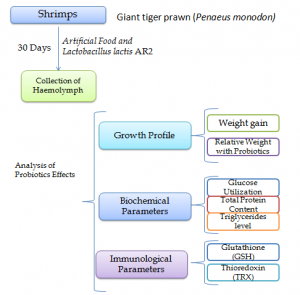
The shrimps were acclimatized for laboratory conditions and divided into three groups and each group contains five healthy and mature animals. The experiment was carried out 30 days with control study where shrimps were fed with commercial food without any probiotics strains. The experimental groups of shrimps were fed with commercial food with selected probiotics (1×108 CFU) at regular intervals five times in day. Shrimps were fed with commercial food incorporated with active probiotics strains in increasing concentrations 5, 10, 15 and 20%. The tank was maintained at 30°C, pH 8.0 and 25rpm for entire experiment. The fresh and marine water was replaced with a new supply on an alternate day.
Collection of Haemolymph
Haemolymph is key body fluid in shrimps rich in several biochemical parameters including immune cells and molecules. The haemolymph was collected from four
week grown shrimps fed with commercial food mixed with selected probiotics strains. The haemolymph (1ml) was isolated via sterile syringe from first abdominal segment (ventral sinus). Haemolymph was collected from each group of growing shrimp along with control study as well. The anticoagulant was added in haemolymph to avoid any chance of clotting. The plasma was removed from haemolymph by brief spin at 4000rpm for 15 min at 4°C. The haemolymph separated from plasma from each group was stored in sterile tubes at -80°C for further studies.
Effect on growth profile
The growth of growing shrimps was measured during the experiment. The growth profile of shrimps was evaluated as Mean weight, Weight gain, Daily weight gain (DWG) and relative gain rate (RGR), Specific growth rate (SGR). The growth profile of shrimps supplemented with probiotics was compared with shrimps without probiotics. The daily increase in growth of growing shrimps was calculated as ratio of total growth weight gain and duration of study in days. The formula for specific and relative growth weight gain is given in table below as per finding carried out Sandeepa et al 2015 [13].
Effect of probiotics on biochemical parameters
The haemolymph was used for the analysis of various biochemical and immunological parameters in growing shrimps supplemented with probiotics and control studies as well. The glucose utilization, lipid profile and total protein content were estimated in experimental and control studies. Here, we used readymade kits for glucose estimation, lipid profile and protein estimation. The protocol was followed as per instructions made by the supplier. The haemolymph of different study groups and control studies was subjected to biochemical analysis. For glucose estimation we used here readymade kit CBA086 from Sigma Aldrich. For serum triglycerides level TR0100 from Merck and TP0100-1KT from sigma Aldrich was used for total protein estimation.
Effect of probiotics on immune parameters
Shrimps possess the primitive type of immune system, in the absence of a specific immune system among invertebrates; the non-specific immune system plays a vital role. Redox enzymes are active immune players in shrimps. The level of glutathione (GSH) and thioredoxin (TRX) were analyzed in isolated haemolymph of study and control group. A fluorometric assay kit CAD 612 from Abcam was used for estimation of glutathione (GSH) while Thioredoxin Reductase Assay Kit (ab83463) was used for thioredoxin estimation.
Results and discussion
Given the experimental setup, shrimps were fed with selected probiotics for a one-month duration mixed with commercial food. The biochemical and immunological parameters were analyzed with control study.
Effect on growth profile
The growth profile of shrimps fed with probiotic strain was evaluated and compared with control studies. The average body weight was recorded with the ratio of daily rise in body weight overtime period of research and probiotic supplementation. As a result shown in figure 1 (a, b) and data provided in table 1 the probiotic had a positive stimulation on growth profile of shrimp. At initial phase there was no difference in body weight in probiotic fed shrimp and control study. Compare to control study the rise in body weight was reported maximum (10.2 ± 0.80 gm) with 15% probiotic supplementation mixed with commercial food. Research also shows here a further increase in probiotic concentration in feed does not have beneficial impact on shrimp growth profile [14].
Effect of probiotics on biochemical parameters
Among biochemical parameters, total protein content, serum triglyceride level and glucose utilization were estimated in probiotic fed shrimps over control study. The shrimps fed with probiotic mixed with commercial food for given duration (30 days) reported metabolically active and increased consumption of glucose was reported. The glucose estimation from haemolymph shows a gradual rise in glucose utilization in probiotic fed shrimps over control study. A maximum glucose utilization as function of level of glucose in haemolymph was reported 27.41 ± 0.41 mg/dl with 15% of probiotic supplementation (table 2 and figure 2 (a, b)). Further, a higher percentage of probiotic supplementation may attenuate metabolic activity of growing animals and reported a decrease in glucose utilization [15]. A similar pattern was seen in total protein content of haemolymph. The metabolic activity is function of anabolic events and synthesis of various molecules including proteins. As the result shown in figure 3 (a, b) and data presented in table 3 we have reported at 15% probiotic feed mixed with commercial food reported highest protein content (78.30 ± 0.80 mg/ml) in haemolymph compare to control study. Serum triglyceride level was other parameters estimated in probiotic fed shrimps versus control study to understand impact of probiotic on growth and metabolism of growing shrimps [16]. As the result shown in table 4 and figure 4 (a, b) at 10 and 15 % of probiotic supplement mixed with commercial-grade food reported rise in triglyceride levels (44.15 ± 0.24 and 44.85 ± 0.74 mg/dl respectively). These findings demonstrate probiotic supplementation had a beneficial role in shrimps growth and metabolic activities allowing animal to opt anabolic events and synthesize essential biomolecules [17].
Effect of probiotics on immune parameters
Shrimps evolved with primitive immune setup entirely different from humans and other higher animals i.e. non-specific immune system. The vital immune players in shrimp’s immunity are enzymes maintain homeostasis in a cellular environment. Here, we investigated proteins glutathione (GSH) and thioredoxin (TRX) in haemolymph of growing animals. These enzymes ensure and reduce oxidative stress caused by various invading pathogens. Compare to control study shrimps fed with probiotic have an elevated level of both the enzyme glutathione (GSH) and thioredoxin (TRX) in haemolymph [18, 19]. The rise in glutathione (GSH) and thioredoxin (TRX) in haemolymph was reported as function of concentration of probiotic incorporated into food. Compare to thioredoxin (TRX) level, the glutathione level was much high at 15% probiotic feed in the study. The study also signifies that glutathione is key enzyme for redox balance in animals and prevent pathogen mediated cellular damage. The study also reported a rise in thioredoxin (TRX) level compare to control investigation but less significant than glutathione (GSH) [20-22]. As a result shown in figure 5 (a, b) and data presented in table 5 level of glutathione (GSH) was reported maximum with 15% probiotic supplementation, On another hand, rise of thioredoxin (TRX) with probiotic supplement (15%) was not significant and said linear compare to control study.
Conclusion
Shrimp farming is well established industry in India and any other part of world. The modern aquaculture industry including shrimp farming emerged a commercial commodity and became an integral part of agriculture. Though these are several novel technologies and innovation improved yield and quality of shrimp but many challenges remain associated with industry [23]. Infections and associated diseases are fundamental threats to shrimp farming affecting annual production on large scale. The uses of conventional approaches such as antimicrobial and antibiotic agents have long history but not eco-friendly indirectly affecting human health.
In recent times, use of probiotic in shrimps farming not only enhanced annual yield but also nutritional values. Further, use of probiotic improve immunity of growing shrimps and reduce annual cost in shrimp farming. There are several bacterial and fungal species evaluated for probiotic potential but lactobacilli remain prime choice [24].
The use of probiotic improve metabolism, enhance anabolic pathways, and improve growth and immunity as well. These useful bacterial species grow utilization of nutrients such as glucose and trigger biosynthesis of proteins and fatty acids essential of growth and development. Shrimps have a primitive immune system and use of probiotic improve production of enzymes such as thioredoxin (TRX) and glutathione (GSH) reducing oxidative load in cellular environment often triggered by infections. The present work highlights a positive and beneficial role of probiotics in shrimp farming [25]. The use of probiotic allows farmer to opt for useful bacteria as an alternate over chemical-based antibiotic and antimicrobial agents that are not eco-friendly [26]. In recent time much emphasis was given to develop antibiotics and antimicrobials from biological origin to reduce load of chemical based compounds on environment (27-31). Certainly the work carried out in present study will support large scale use of probiotics not only shrimps farming but also in other aquaculture industries as well.
Acknowledgment
The author acknowledges Acharya Nagarjuna University, Guntur, Andhra Pradesh, India, for providing a facility for the current study.
Conflict of Interest
The author declares no conflict of interest.
References
1. Bui TD, Luong-Van J, Austin CM. Impact of shrimp farm effluent on water quality in coastal areas of the world heritage-listed Ha Long Bay. American Journal of Environmental Sciences. 2012; 8(2):104–116.
2. Melgar Valdes CE, Barba Macías E, Alvarez-González CA, Tovilla Hernández C, Sánchez AJ. Microorganisms effect with probiotic potential in water quality and growth of the shrimp Litopenaeus vannamei (Decapoda: Penaeidae) in intensive culture. Revista de biología tropical. 2013;61(3):1215-28.
3. Gatesoupe FJ. The use of probiotics in aquaculture. Aquaculture. 1999;180(1-2):147–165.
4. Páez-Osuna F. The environmental impact of shrimp aquaculture: causes, effects, and mitigating alternatives. Environment Management 2001;28(1):131-40.
5. Ninawe AS, Selvin J. Probiotics in shrimp aquaculture: avenues and challenges. Critical Review Microbiology. 2009; 35(1):43-66.
6. Farzanfar A. The use of probiotics in shrimp aquaculture. FEMS Immunology Medical Microbiology. 2006; 48(2):149-58.
7. Fernandes S, Kerkar S, Leitao J, Mishra A. Probiotic Role of Salt Pan Bacteria in Enhancing the Growth of White leg Shrimp,
Litopenaeus vannamei. Probiotics Antimicrobials Proteins. 2019; 11(4):1309-1323.
8. Nimrat S, Suksawat S, Boonthai T, Vuthiphandchai V. Potential Bacillus probiotics enhance bacterial numbers, water quality and growth during early development of white shrimp
9. (Litopenaeus vannamei). Veterinary Microbiology. 2012; 159(3-4):443-50.
10. Ravi AV, Musthafa KS, Jegathammbal G, Kathiresan K, Pandian SK. Screening and evaluation of probiotics as a biocontrol agent against pathogenic Vibrios in marine aquaculture. Letter Applied Microbiology. 2007; 45(2):219-23.
11. Wang YC, Hu SY, Chiu CS, Liu CH. Multiple-strain probiotics appear to be more effective in improving the growth performance
and health status of white shrimp, Litopenaeus vannamei, than single probiotic strains. Fish Shellfish Immunology. 2019; 84:1050-1058.
12. Verma MK and Pulicherla KK, Broad substrate affinity and catalytic diversity of fibrinolytic enzyme from Pheretima posthumous—Purification and molecular characterization study, International Journal of Biological Macromolecules. 2017, 95:1011-1021
13. Verma MK and Pulicherla KK, Enzyme promiscuity in Earthworm serine protease- Substrate versatility and therapeutic potential, Amino Acid. 2016; 48(4); 941-948
14. Sandeepa.MG and Ammani. K, Effect of probiotic bacterium on growth and biochemical parameters of shrimp Litopenaeus vannamei, International Journal of Recent Scientific Research, 2015; 6, (2) 2871-2875,
15. Liu CH, Chiu CS, Ho PL, Wang SW. Improvement in the growth performance of white shrimp, Litopenaeus vannamei, by a protease-producing probiotic, Bacillus subtilis E20, from natto. Journal of Applied Microbiology. 2009; 107(3):1031-41.
16. Kautsky N, Rönnbäck P, Tedengren M, Troell M. Ecosystem perspectives on management of disease in shrimp pond farming. Aquaculture. 2000;191(1–3):145–161
17. Wang YB, Li JR, Lin J. Probiotics in aquaculture: challenges and outlook. Aquaculture. 2008;281(1–4):1–4
18. Austin B, Stuckey LF, Robertson PAW, Effendi I, Griffith DRW. A probiotic strain of Vibrio alginolyticus effective in reducing diseases caused by Aeromonas salmonicida, Vibrio anguillarum and Vibrio ordalii . Journal of Fish Diseases. 1995;18(1):93–96.
19. Dohail A, Abdullah M, Roshada H, Aliyu M. Effects of the probiotic, Lactobacillus acidophilus, on the growth performance, haematology parameters and immunoglobulin concentration in African Catfish (Clarias gariepinus, Burchell 1822) fingerling. Aquaculture Research. 2009;40(14):1642–1652.
20. Castex M, Lemaire P, Wabete N, Chim L. Effect of dietary probiotic Pediococcus acidilactici on antioxidant defences and oxidative stress status of shrimp Litopenaeus stylirostris . Aquaculture. 2009;294(3-4):306–313.
21. Wang YB, Xu ZR, Xia MS. The effectiveness of commercial probiotics in northern white shrimp Penaeus vannamei ponds. Fisheries Science. 2005; 71(5):1036–1041.
22. Hoseinifar SH, Sun YZ, Wang A, Zhou Z. Probiotics as Means of Diseases Control in Aquaculture, a Review of Current Knowledge and Future Perspectives. Frontier Microbiology. 2018;12;9:2429.
23. Balcázar J. L., Vendrell D., De Blas I., Ruiz-Zarzuela I., Múzquiz J. L.. Effect of Lactococcus lactis CLFP 100 and Leuconostoc mesenteroides CLFP 196 on Aeromonas salmonicida infection in brown trout (Salmo trutta). Journal of Molecular Microbiology Biotechnology. 2009; 17, 153–157.
24. Chiu C. H., Guu Y. K., Liu C. H., Pan T. M., Cheng W. (2007). Immune responses and gene expression in white shrimp, Litopenaeus vannamei, induced by Lactobacillus plantarum. Fish Shellfish Immun. 23, 364–377.
25. Ibrahem MD. Evolution of probiotics in aquatic world: Potential effects, the current status in Egypt and recent prospectives. Journal of Advance Research. 2015; 6(6):765-91.
26. Lilly D.M., Stilwell H. Probiotics: growth-promoting factors produced by microorganisms. Science (New York, NY) 1965;147(3659):747–748
27. Cahill M.M. Bacterial flora of fishes: a review. Microbial Ecology. 1990; 19:21–41
28. Sobha K, V Rao, Ratna K and Mahendra Kumar Verma, An Investigation into phytochemicals constituents, antioxidant, antibacterial and anti-cataract activity of Alternanthera sessilis, a predominant wild leafy vegetable of South India, Bio-catalysis and Agricultural Biotechnology, 2017; 10; 197-203
29. Verma MK, Xavier F, Verma MK, Sobha K. Evaluation of the Cytotoxic and Antitumor activity of Serine Proteases Isolated and Purified from the Indian Earthworm Pheretmia posthuma, Asian Pacific Journal of Tropical Biomedicine. 2013; 3 (11): 896-901.
30. Verma MK and Verma MK, Earthworm- a potential source for stable and potent antimicrobial compounds- isolation and purification study, 2012, International Journal of Pharmacy and Pharmaceutical Sciences.4; 4, 540-543
31. K Sobha, N Lalitha, N Pavani, R Praharshini, D Pradeep, Verma MK, Statistical optimization of Factors influencing the activity and the kinetics of partially purified Lipase produced from Aspergillus japonicus (MTCC 1975) cultured in protein enriched medium, International Journal of Chem Tech Research, 2014, 6,11,4817-4831
32. Verma MK and Sobha K, Antioxidant and Anti-Inflammatory Properties of Autolysed Extract of the Indian Earthworm Pheretima posthuma after Preliminary Purification – An In Vitro Study, Research Journal of Pharmaceutical, Biological and Chemical Sciences (RJPBCS), 2013, 4, 4, 888-892
Tables and Figures
Note: Click to enlarge on images
Tables:


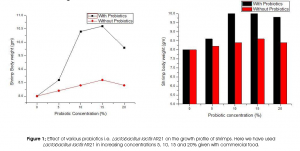
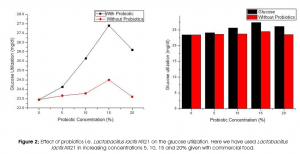
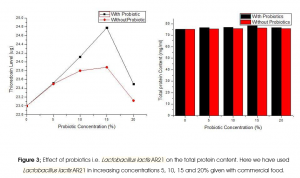
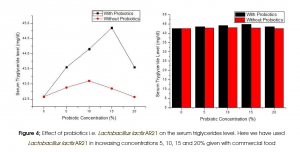

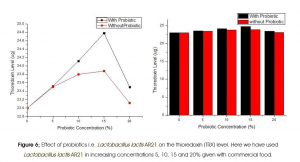
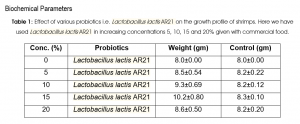
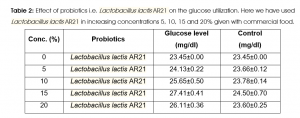
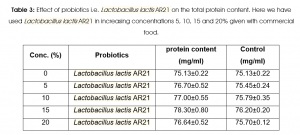
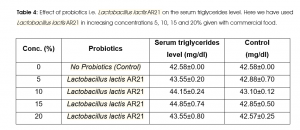





Post Your Comment